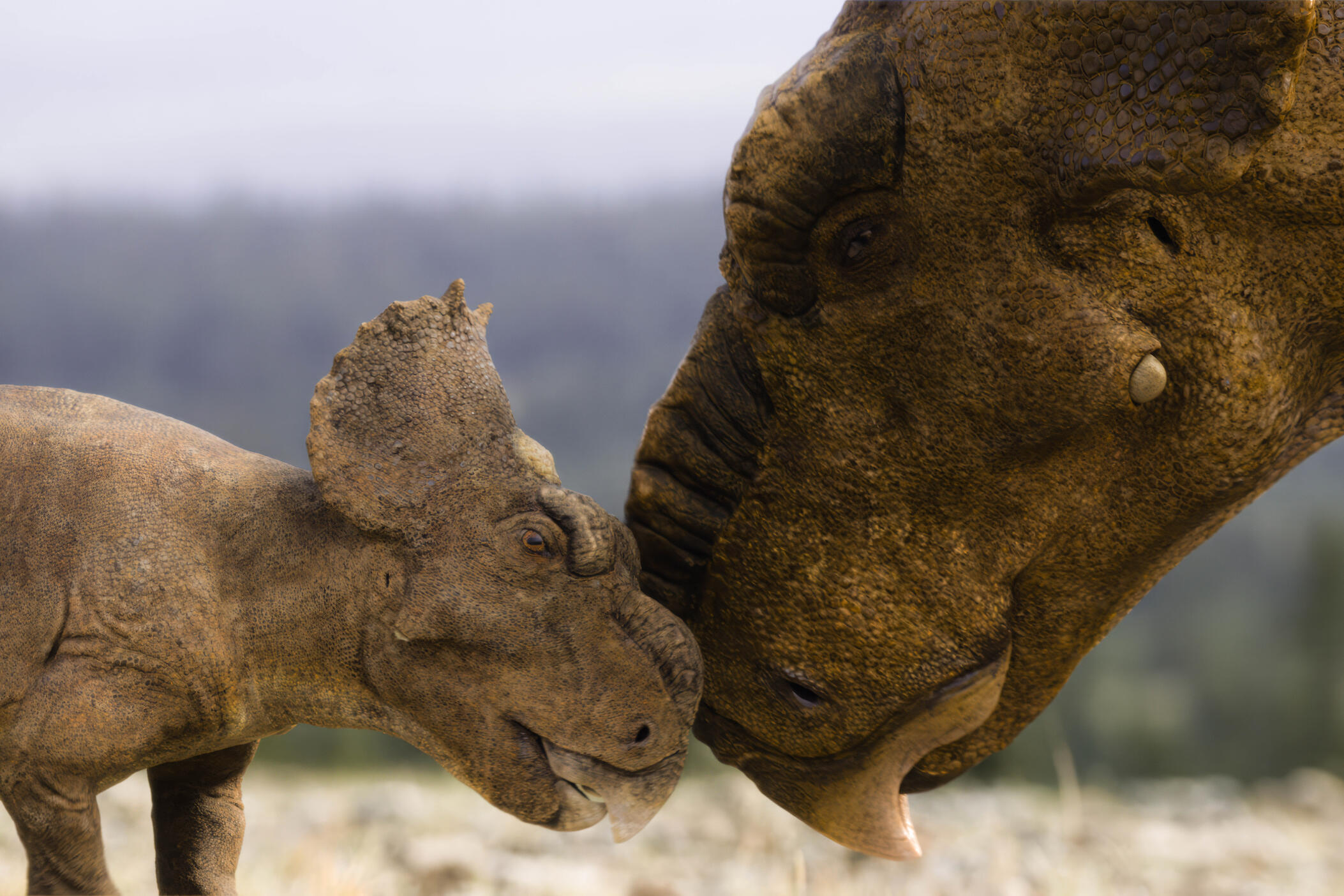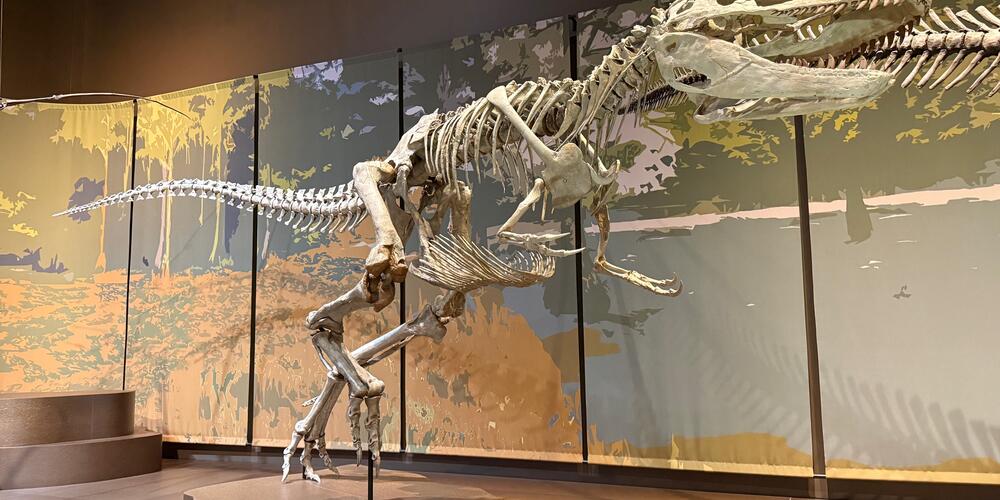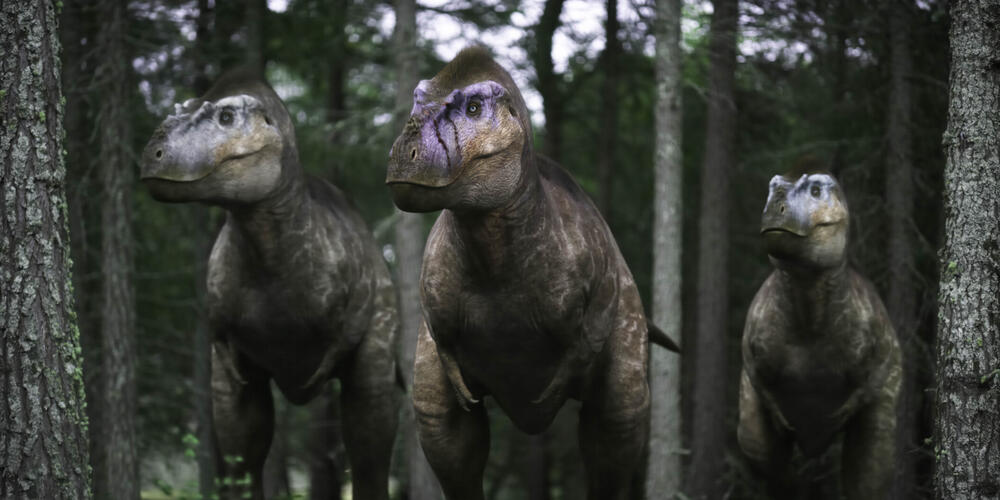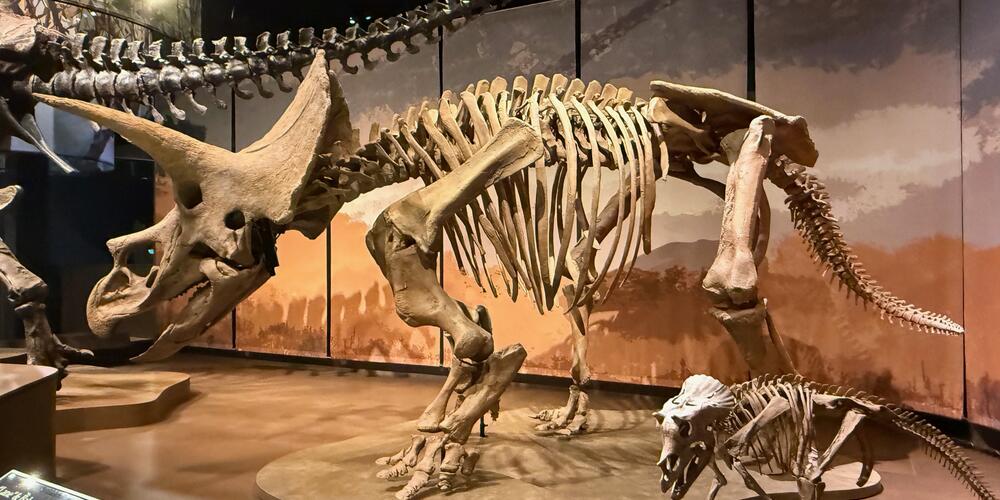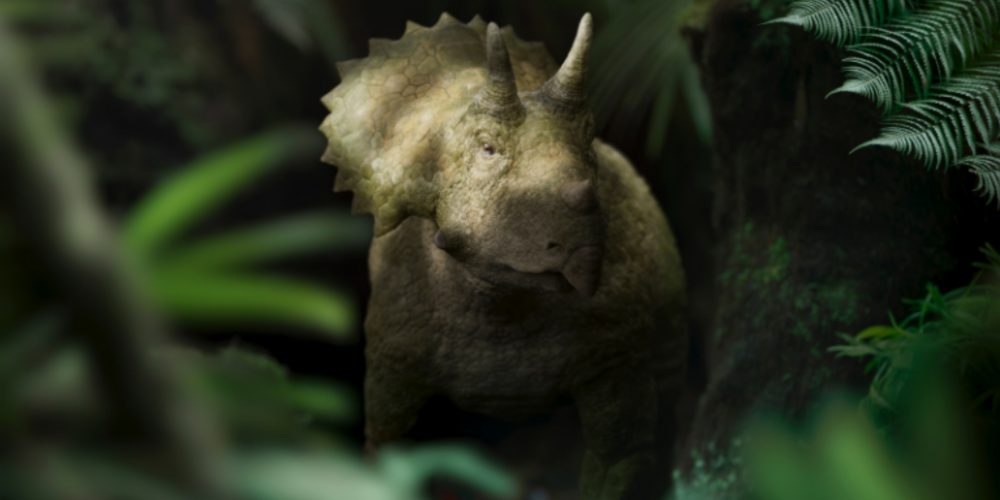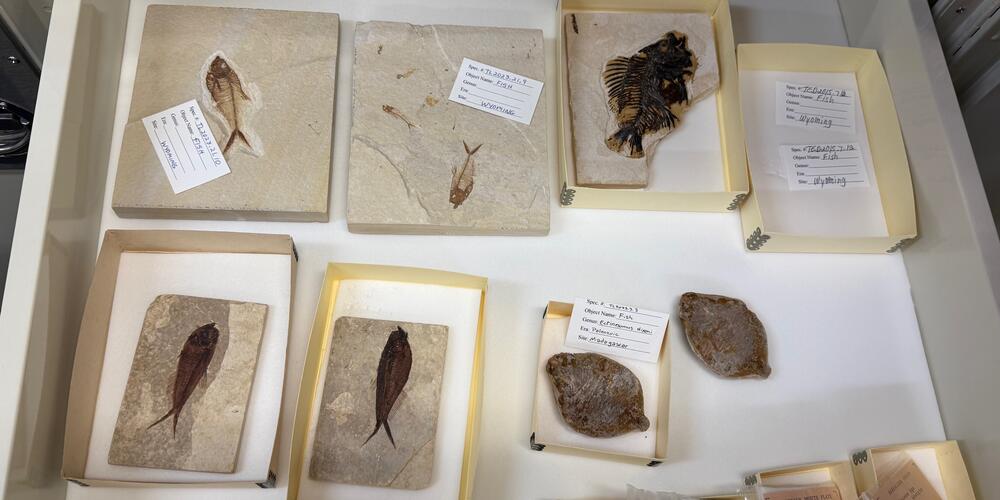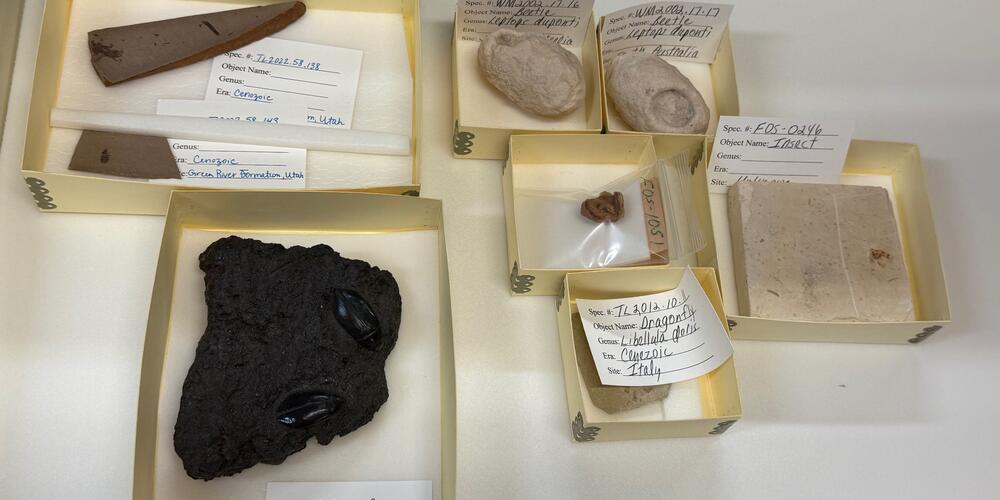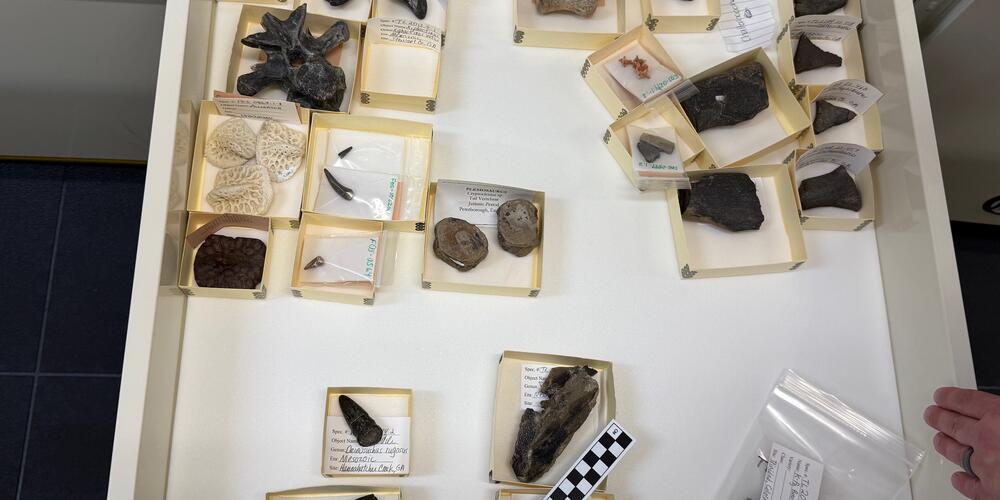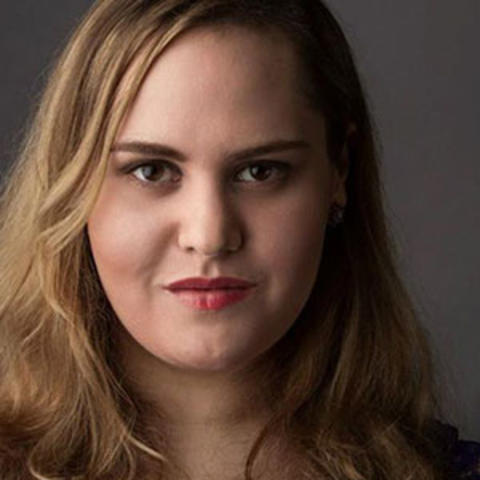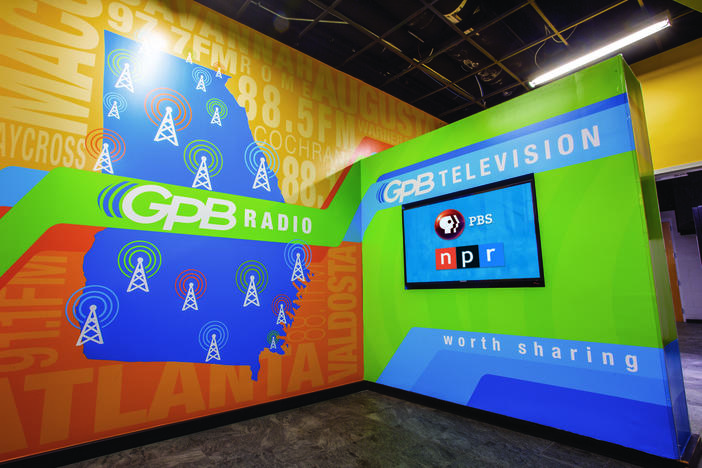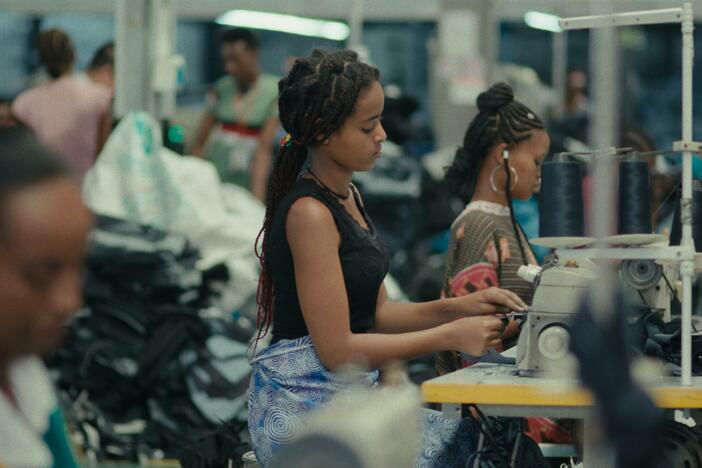Section Branding
Header Content
From Screen to Skeleton: Meet the Dinosaur Stars at Tellus Science Museum
Primary Content
If you tune in or stream Walking with Dinosaurs this summer, a continuation and update of the hit 1999 documentary series in collaboration with the BBC, you’ll find that it’s hard to ignore the passion of the paleontologists at work. Sometimes it doesn’t even seem like work as they immerse themselves in the various dig sites shown throughout the show’s six episodes. Yes, they use precise tools and years of honed skills to uncover a bone here, a fossil there, but it’s their energy and excitement that shines through. Whether they’re discussing their work in front of the camera or sharing their glee with their colleagues at uncovering something new, it’s not hard to tell that the experts featured in Walking with Dinosaurs adore what they do and handle everything with both fascination and care (they use helicopters to lift the heaviest artifacts, all carefully preserved in strips of fabric and plaster).
But you don’t have to go all the way to Montana, Utah, or Alberta, Canada to find such zeal. For dinosaur newbies and enthusiasts alike, museums throughout Georgia offer the ability to get up close to magnificent casts of real fossils to give visitors a local look at the species and topics introduced in Walking with Dinosaurs. I ventured to Cartersville’s Tellus Science Museum for my own trip back in time to the prehistoric era and met Tellus’ Curator, Ryan Roney, for a tour through the Fossil Gallery.
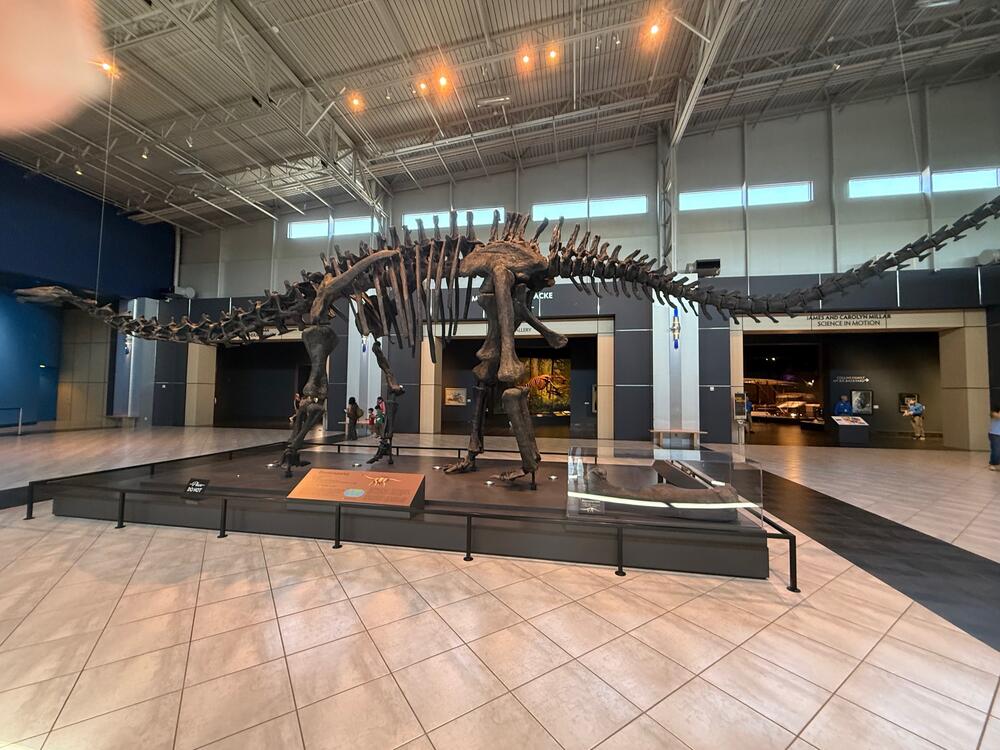
After being greeted by Roney and a Brontosaurus cast in the museum’s foyer, we ventured further into the past, the Southeast's story told by the array of casts and fossils on display. The Tellus museum opened in 2009, yet since then, the research and discoveries around fossils has changed: the Appalachiosaurus, for example, went through one such transformation. “After the museum opened,” Roney told me as we stopped in front of a cast of a fossil that belonged to a Tyrannosaurian theropod, “we discovered that these weren't the appropriate arms for [this fossil cast.] So we replaced those. We’ve had a couple of other little tweaks in the museum where new discoveries have been made. So we have to update that.”
It’s a constant information evolution, this time right in front of me instead of simply on a screen. But Tellus shares that constant state of discovery right alongside Walking with Dinosaurs with Roney and his staff discovering something new, whether it’s a new fossil or cast to Tellus or something new about a previous exhibit on display. And speaking of exhibits on display, I was pleased to notice that some familiar faces from Walking with Dinosaurs also have a home at Tellus, noticeably Edmontosaurus and Triceratops.
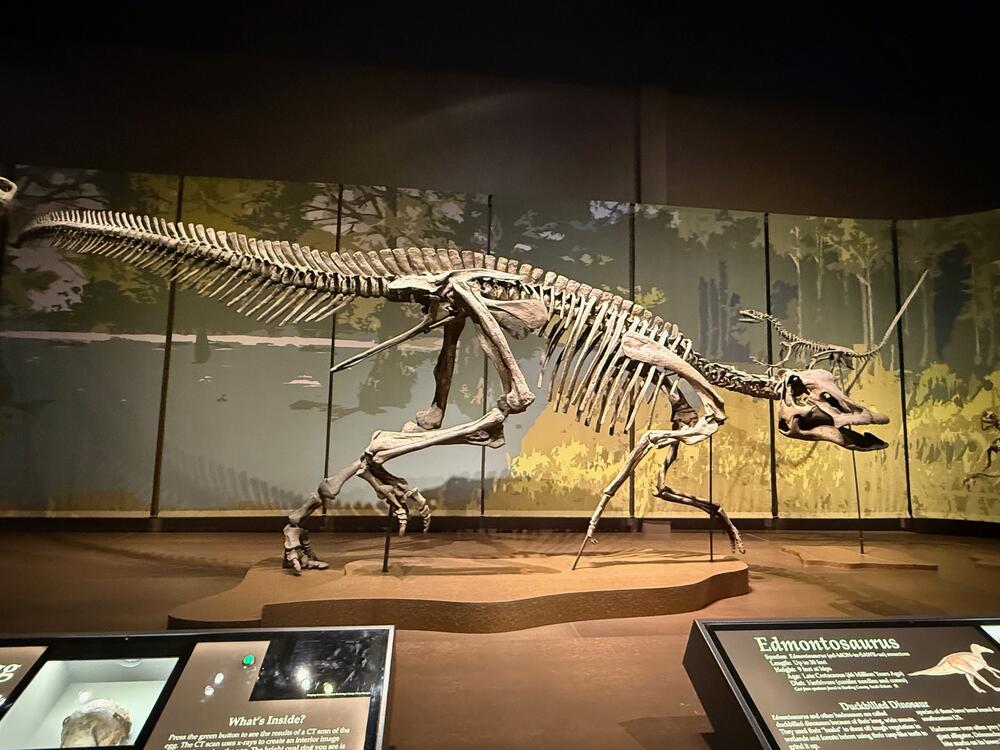
“From Georgia all the way up into Canada, you had hadrosaurs of some kind,” Roney explained. And while the Edmontosaurus wasn’t the exact species that made its way to Alabama and, experts suggest, Georgia as well, it was in the same hadrosaur family. In the display, it’s positioned near the aforementioned Appalachiosaurus, one of the closer relatives to the Albertosaurus featured in Walking with Dinosaurs. Both are relatives to the famous Tyrannosaurus rex, who also takes up residence in Tellus’ Fossil Gallery. But what’s the difference between them all?
Roney easily broke it down for me, not unlike the paleontologists on the show. “[The Appalachiosaurus] is about a third of the size, maybe even a quarter, of the Tyrannosaurus. But this cast is more of a juvenile,” He shared. Just like on-screen, the fossils at Tellus tell a story about how each dinosaur lived and died, though Roney shared that they didn’t have enough bones from the Appalachiosaurus from any of the dig sites that showed precisely how it perished, or even how it sustained the injuries it likely had. Nevertheless, many of the fossils that Tellus’ casts were made from didn’t originate in Georgia: instead, many were found in Alabama and Mississippi, near shore sediments. I was curious as to why.
“It’s just that sedimentary regime where you’re at,” Roney clarified, after showing me a real dinosaur tooth that had been presumably digested by its predator before it was found. “We talk about the fall line, but the fall line actually sits about 20 miles south of where the ancient coastline was. So those sediments that you're in won't have had the whole animal as it comes down the stream. And [Columbus] is the only place in Georgia with some of that stuff preserved. There is Cretaceous material almost all the way to Macon, but none of that outside of Stewart and Chattahoochee County have any fossils in them. The other ones are just sediments.”
“We talk about the fall line, but the fall line actually sits about 20 miles south of where the ancient coastline was. So those sediments that you're in won't have had the whole animal as it comes down the stream. And [Columbus] is the only place in Georgia with some of that stuff preserved. There is Cretaceous material almost all the way to Macon, but none of that outside of Stewart and Chattahoochee County have any fossils in them. The other ones are just sediments.”
In short, Georgia must rely on other states to tell us some of the dinosaur story that impacts the Peach State, connecting the dots of findings in the Eastern coastline and Southeast region of the United States to help illuminate which dinosaurs set foot in Georgia. Roney and other experts throughout the state know that they were here, but the change in the fall line over millions of years haven’t kept fossils intact.
Other states and enthusiastic donors, Roney then shared as he guided me to the two Triceratops casts on display. An adult and a juvenile, a reminder from Walking with Dinosaurs where the paleontologists on-screen uncover a juvenile triceratops fossil themselves and speculate, based on the findings, how it explored the world through a child’s eyes. Roney shared that Lily, the juvenile cast at Tellus, was an amalgamation of three different juvenile triceratops, lovingly named after the donor’s granddaughter. But both on the juvenile and adult alike, it’s surprising to see just how solid the skulls are. Walking with Dinosaurs doesn’t shy away from showing how like armor the skull is, including the large frill that protected the Triceratops’ more vulnerable neck. “Even as a cast, it took six of us to lift [it] up and put [the skull] on to it. And actually when you see the time lapse, you'll see a moment where we lift it up and we can't quite get it,” Roney remarked. I believe it: it’s nothing short of impressive, even more so when he shared that the framework of the Triceratops cast eventually accepted the skull and the cast settled in, complete.
A visit through the marine life fossils was next, where many of the Georgia-found fossils were kept, including an array of oysters, clams, and teeth. Shark teeth in particular, which happens to be the Georgia state fossil. But then, Roney offered me a unique opportunity: would I like to go and see the research lab, including his colleagues hard at work and a variety of fossils not on display?
Of course, I jumped at the chance.
Leading the way through a collection of framed posters from famous cinematic dinosaurs, Godzilla and Jurassic Park among them (a Walking with Dinosaurs poster will be joining the collection soon), Roney took me back to where he and his colleagues research, catalogue, and store what isn’t on display for guests: work infused with passion to better understand those that came before us as well as connect with other professionals and enthusiasts alike. I was pleased to learn that even budding paleontologists and geologists still in high school have the opportunity to volunteer and learn from Roney and his colleagues at Tellus: He shared that a high school student from Bartow County was studying Paleozoic fossils, the oldest fossils in Georgia, under his mentorship and is writing a paper about them. Students from Roswell High School and Cobb County have also found their inspiration volunteering with Tellus, with hopes that they might do a poster or presentation at professional meetings next year.
But you don’t have to be considering paleontology or a related subject as a career to get involved. Alongside various clubs in Georgia where interested patrons can pay to dig at various dig sites, Roney suggested paying attention to events at Tellus. “Every couple of years I bring in speakers with our symposium at the museum every March. Check the events we have here, because these are people that [visitors] can talk to.” While 2025 featured an astronomy theme, he plans to bring in scientists and experts in mineralogy and paleo-geology in the future.
“Every couple of years I bring in speakers with our symposium at the museum every March. Check the events we have here, because these are people that [visitors] can talk to.”
Back in the research area, I stepped into what felt like another museum in itself. After meeting Roney’s colleagues, I learned more about the process of how they catalogue every artifact before drawers were opened and shelves perused, Roney bringing out a variety of fossils either in the midst of research or simply not fitting into the public displays yet. From mollusks to beetles, from tiny fish to an array of teeth, it was a collection from a world that existed millions of years ago.
But the pièce de résistance, for me at least, lived back in the shelves and Roney didn’t hesitate to show me back to where the dinosaur bone lived. Taken from a Hadrosaur and kept in a temperature-controlled environment in order to manage humidity levels, the femur is a real dinosaur bone found in Georgia and donated, like many of the fossils in storage and on display for the public, to Tellus.
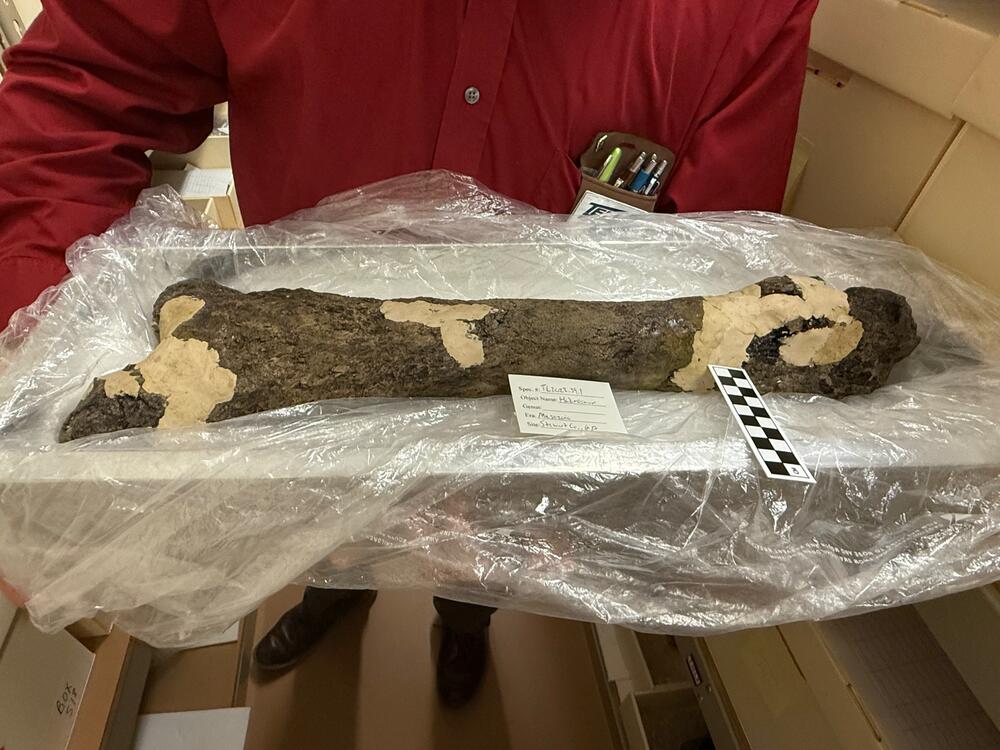
And that, perhaps, is part of what makes Tellus so special. It’s not just Ryan Roney and the many people who help keep Tellus running on a day-to-day basis, it’s the fans and experts who volunteer their time and attend symposiums, all in order to connect with other members of the community and get a broader understanding of the world. It’s the discoveries that are donated in order to add to the Southeast’s prehistoric story. And it’s the next generation of geologists and paleontologists in schools statewide who meet the formerly-used arm cast once attached to the Tyrannosaurian theropod and desire to know more about where it came from.
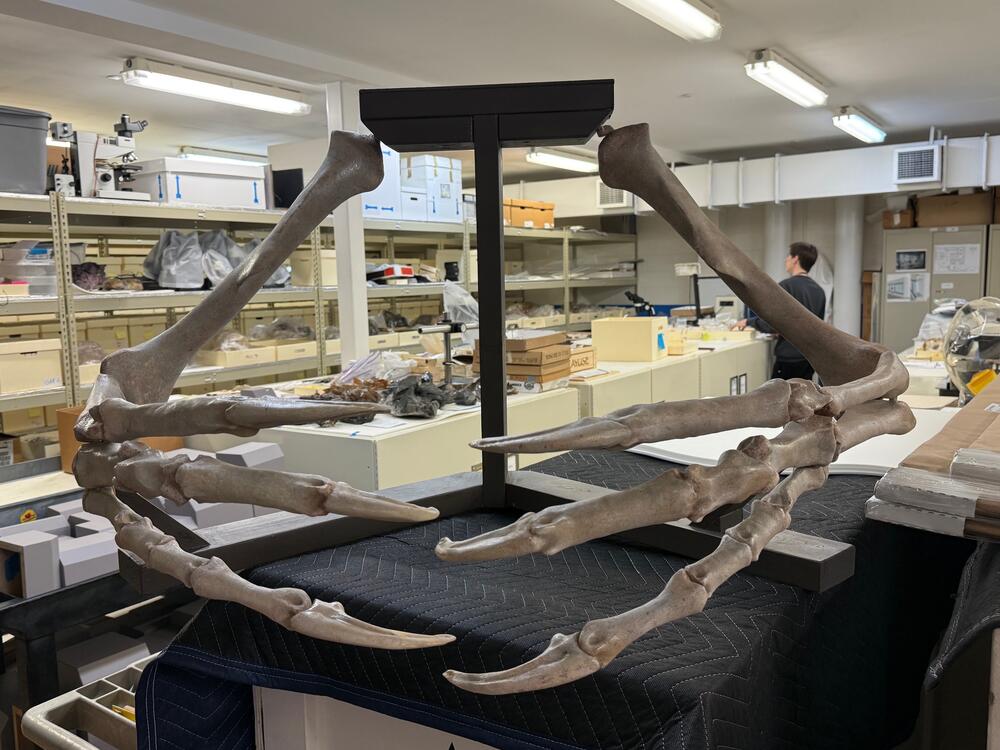
A new cast is slated to join the Fossil Gallery soon, a Deinosuchus, a process that Roney describes as an adjustment of the display and a week of careful moving in order to fit in the newest resident. Personally, I’m looking forward to another chance to walk beside the dinosaurs who once called Georgia home, revisiting new stories while learning brand new ones based on the latest research and discoveries. And that’s what Walking with Dinosaurs is all about.
Walking with Dinosaurs premieres on GPB-TV on Monday, June 16 at 8 p.m. and will air for three consecutive days and six episodes. Encore presentations will air throughout the summer and stream on GPB Passport: please consult the online broadcast schedule or your copy of GPB NEXT for the exact dates and times. For more dinosaur content, we encourage you to visit our YouTube playlist for videos from PBS and created by GPB featuring stories from across the state.
Meet the stars of Walking with Dinosaurs on a tour of Georgia's own Tellus Science Museum with Curator Ryan Roney.

